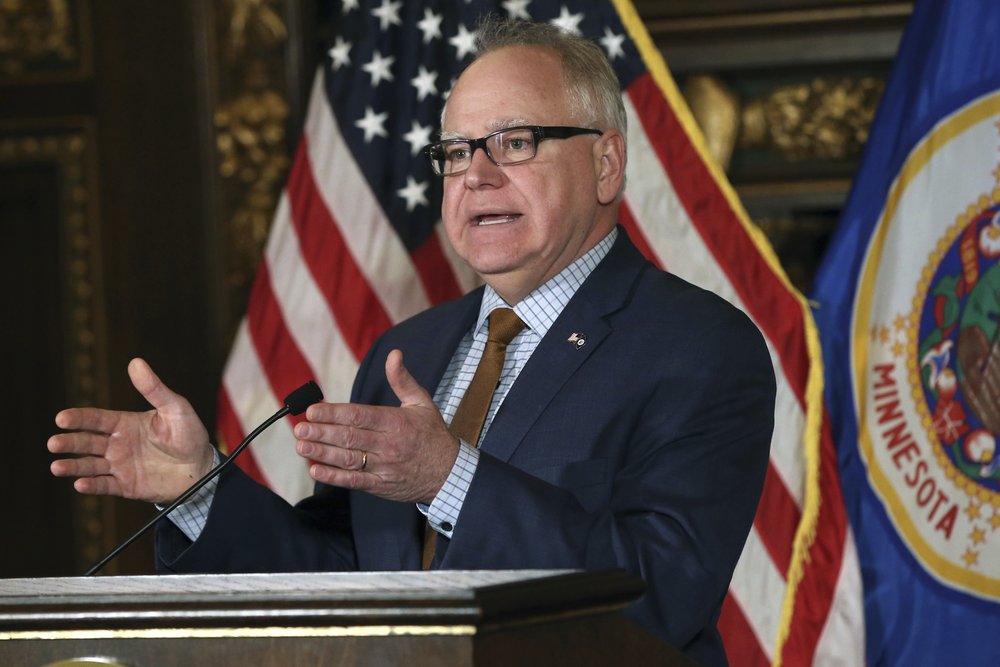Minnesota
Governor, legislative leaders pledge orderly end to session

ST. PAUL, Minn. (AP) — Gov. Tim Walz and Minnesota’s top two legislative leaders announced deadlines for committee and floor action Monday that they hope will avert the traditional political gamesmanship at the end of the session and bring it to an orderly conclusion by May 20.
“Too often Minnesota’s budget-drafting process has resulted in a game of high stakes poker at the end of the session. And Minnesotans and their elected representatives and senators deserve a better process than having three or five leaders in a back room deciding everything in the last few days of session,” said Democratic House Speaker Melissa Hortman.
The speaker pointed to state government shutdowns in 2005 and 2011 after budget talks broke down; sessions that ended chaotically in 2015, 2016 and 2017; and a 990-page catch-all bill assembled by Republican House and Senate leaders at the end of the rancorous 2018 session that a defiant Gov. Mark Dayton, a Democrat, vetoed.
The main job of the session is passing a two-year budget that’s expected to be around $47 billion. Walz is due to announce his budget proposal Feb. 19, but lawmakers won’t get final revenue projections until Feb. 28.
That forecast is expected to show a smaller budget surplus than the $1.5 billion projected in December.
Under the agreement, committees in a bill’s house of origin must pass it by March 15. Bills that meet that deadline must pass committees in the other house by March 29, and major finance proposals must pass committees by April 12.
Both the House and Senate must pass all major finance measures off their floors and send them to conference committees by May 1. Budget targets for these bills must be presented to the conference committees by May 6, and those committees must complete their work by May 13. That’s intended to allow time for resolving all disputes before the Legislature adjourns May 20.
Minnesota is the only state this year where one party controls the state House while the other controls the Senate.
The state still has a Democratic governor in Walz, and Democrats now control of the House, but Republicans maintain a slim Senate majority.
“Minnesota seems to like divided government, and we have divided government again, but that doesn’t mean we have to be divided on everything,” GOP Senate Majority Leader Paul Gazelka said.
Hortman and Gazelka said they announced the deal publicly instead of quietly in a letter so that the press and public hold them accountable for meeting the deadlines.
“A press conference tells you that we mean business about this,” Gazelka said.
“I like the idea of the public pressure forcing us to reach some of these compromises and not just digging in and business as usual,” Walz said.
Walz answered with as quip when asked what it says about the state of politics in Minnesota that they felt the need to hold a news conference to say they were going to do the jobs they were elected to do.
“Well, it says the bar is pretty low. … Our hope is this becomes the norm and this is the expectation, but it hasn’t been for a long time,” he said.







